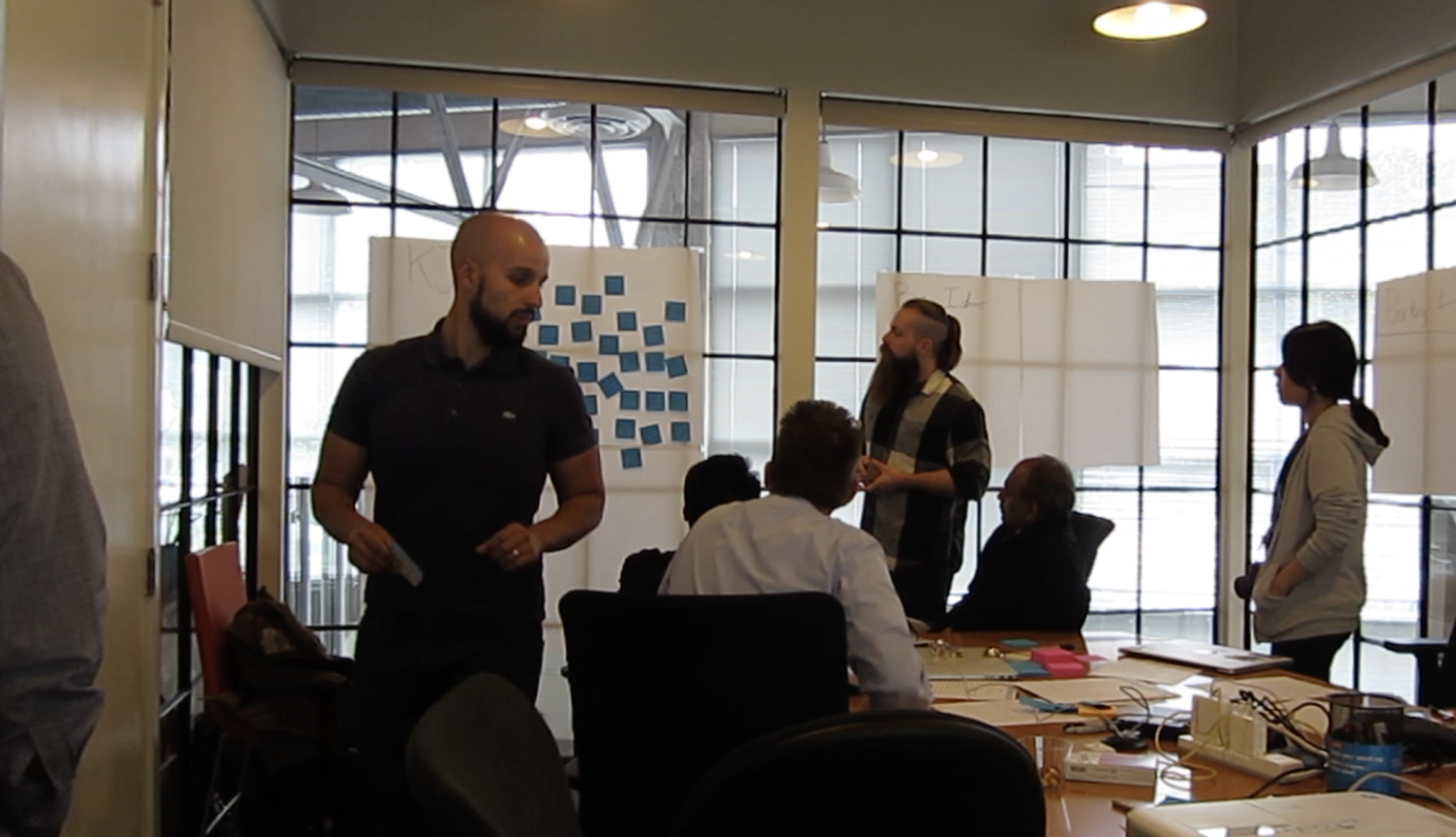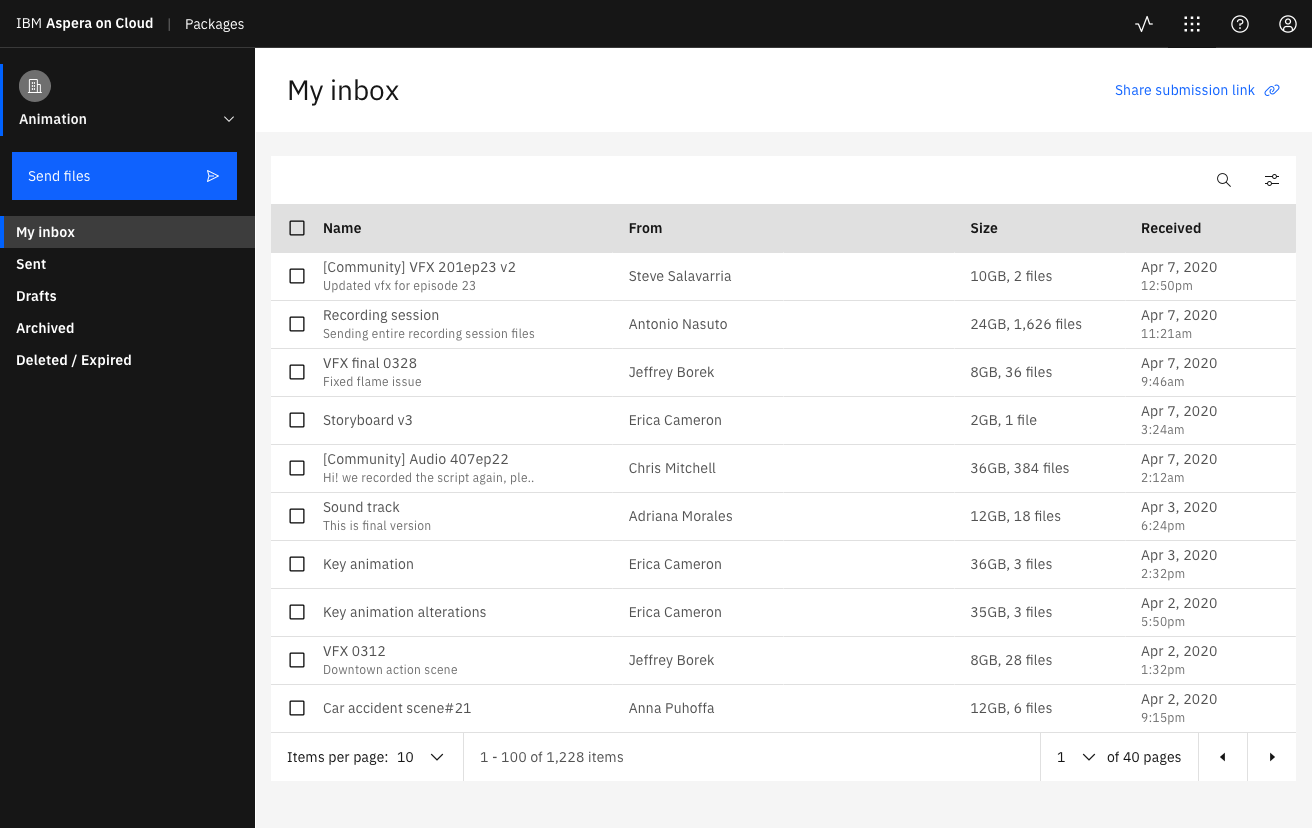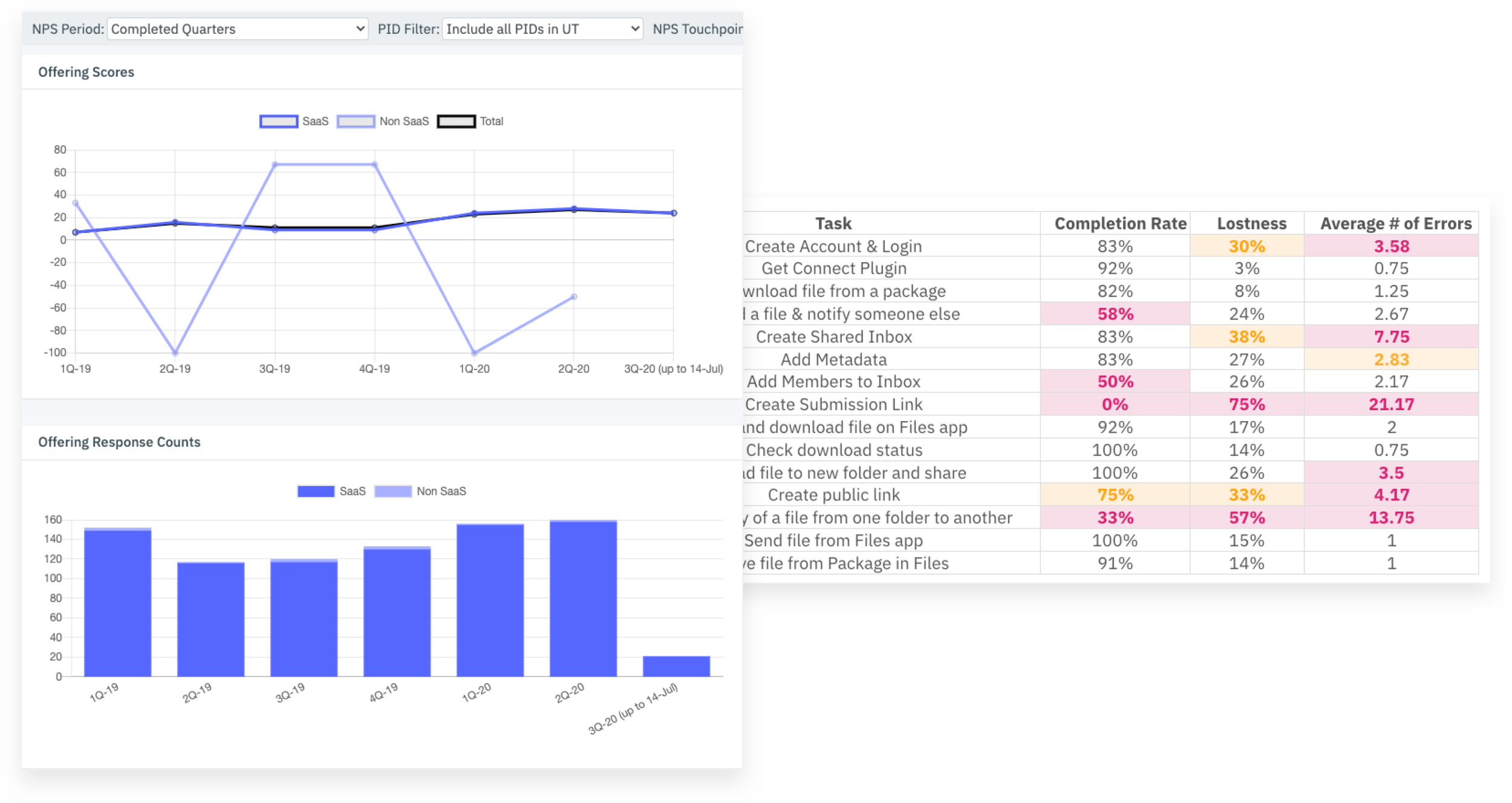Aspera on Cloud
Lead User Experience Designer, Sep 2017 - Present
Aspera on Cloud is a cloud based, file transfer service targeting the media and entertainment industry. The service enables users to transfer files at maximum speed without size limits, quick and secure collaboration with external users, and empower automated media processing via metadata.
I lead the design of the entire end user experience centered around file delivery and sharing. I also closely collaborate with user researchers, product managers, and engineers to prioritize design features.
Context
Aspera has a strong market share in on-premise file transfer tools due to having high speed transfers bundled with a robust UI. However, user satisfaction was low in the first cloud offering. Our original cloud service “Files” combined two different file transfer models in one interface to serve different use cases, and it caused a lot of confusion to our users. In addition, it lacked other needs that are desired in the Cloud and Media & Entertainment industry. These issues drove the team to redesign the entire service and we set the project goal as increasing conversion rate for new users, and increasing user satisfaction for existing users.
Old Aspera Files interface
Understand users
In the early phases, I facilitated an internal design workshop with user researchers, sales, PMs, marketing, engineering, and support team members to understand current users’ frustrations through various channels, as well as to define overarching business strategy. The workshop helped my team as we used the reflection as precursors to exploring new ideas and finding the right problem to solve.
My team and I also visited sponsored users in NY and LA, and conducted generative interviews to hear their pain points and needs directly, helping to validate the early assumptions. The interviews helped not only to understand users, but also to clarify an additional constraint: the new offering should not “break” workflows that were already established within the Aspera ecosystem. Many customers were already using multiple Aspera clients such as automation and reporting tools, and Aspera on Cloud needed to fit in without breaking existing workflows.
Personas
Key insight
Simplification of file delivery and sharing model
Originally, Aspera Files had two ways of file transferring in the one UI. The first way employs an email-like model, while the second uses a shared folder model. These two models have their own recognized use cases, but having both in the same UI caused confusion to the users. End users were often unclear on the differences between transferring files with one model or the other. Some admins were using both methods to transfer files, but it became clear that most end users chose and stuck to one.
Clear and comprehensive transfer event notification
For those in the media and entertainment industry, notifications of various file transfer events are just as important as the transfer speed. We found users wanted clear notifications on a variety of events including when a transfer completes and when files were downloaded by a user. These notifications help make auditing easier and reduces unnecessary communication burdens.
Easy and secure external user contribution
Most of our customers collaborate heavily with external vendors. Our customers want vendors to be empowered to easily send files in a secure manner. The app should be simple to use, while preventing data breaches.
Support automation
For many larger companies that process large volumes of data, automation is a mandatory feature. Many of our customers established workflows to process media content by utilizing transfer events and metadata.
solution
Two applications: Packages and Files
Packages is an email-like file delivery tool with media & entertainment tailored features like advanced file delivery notifications. Files is a collaboration tool based on shared folders that provides a very intuitive file sharing experience.
Instead of having two different file transfer models in one interface, we decided to serve them as two separate applications within Aspera on Cloud. In the onboarding experience, we give a clear guide of how to use the apps based on the user’s use case: media delivery vs. internal collaboration.
Users can switch applications from the app switcher, and can focus on finishing their job without getting overwhelmed by too many features.
Admins can also enable/disable the applications based on their company’s use cases.
Granular notification options and transfer activity panel
When the users send files through Packages, they can make anyone get notified when the files are fully uploaded and downloaded in addition to themselves.
The recipient will get email notifications. Senders can see downloads details of who downloaded the files on the sent Package details in Aspera on cloud.
Users can see all their transfer activities on the in-app Transfer Activity panel. The panel is accessible from every page in the app, and provides details of ongoing transfers as well as completed transfers for the record. When a transfer fails, the sender can find out why the transfer failed and how to troubleshoot.
Submission portal for external users
To receive files from various external vendors, Aspera on cloud users can create a “shared inbox”. When an external user is added to the shared inbox with send only permission, they can only access the submission portal after authenticating. Aspera on Cloud users can set the external users’ submit permission expiration to securely work with short-term collaborators.
The Submission portal has a very simple and limited UI, only allowing external users to send files. Aspera on Cloud users can customize the background to advertise their company’s branding.
Support metadata for automation
Aspera on Cloud users can configure custom metadata fields that senders have to fill out when they send files. This metadata is often used for automation purposes; Aspera or other automation tools can import the metadata along with the files, and process the content through pre-configured workflows.
Increase user satisfaction by data
User experience design in itself does not produce a perfect end product. Rather, we need to keep iterating and improving to satisfy users. Through close collaboration with our user researcher, we measure user satisfaction and clarify design problems through quantitative data. NPS score/feedback is one of the most important metrics we closely monitor. We also conduct usability testing that includes structured performance and subjective data to benchmark often to help identify design problems.
While designing solutions, I use event data and funnel analysis in Amplitude to validate assumptions and discover where users struggle. Using various quantitative data helps me make better design decisions and persuade stakeholders.



















